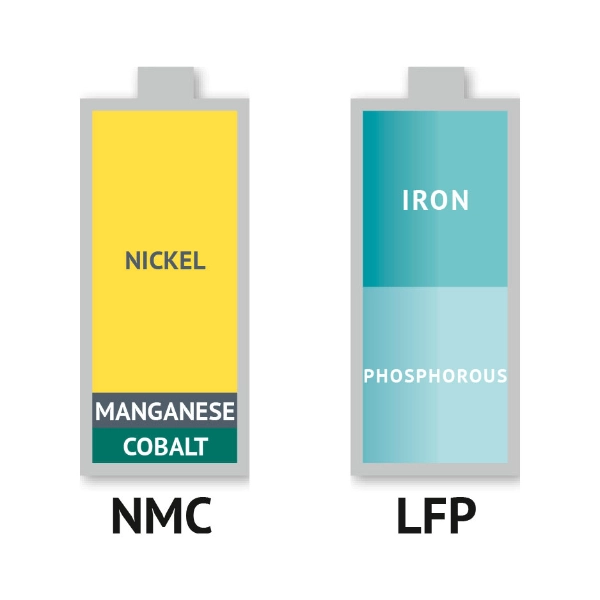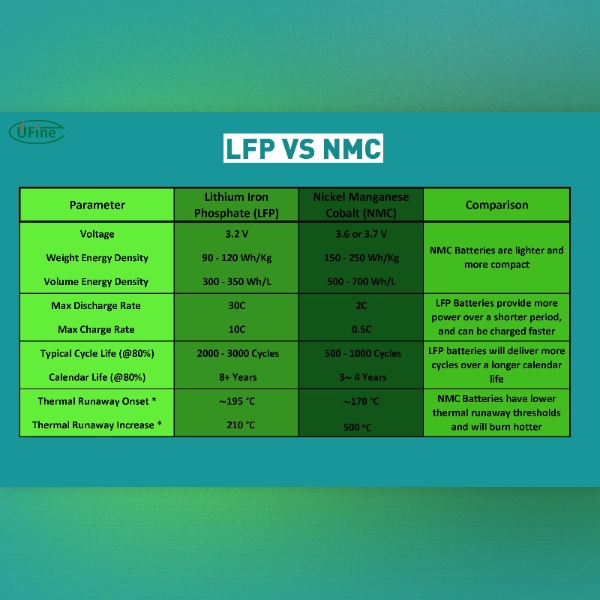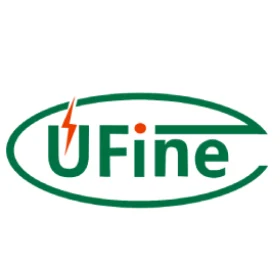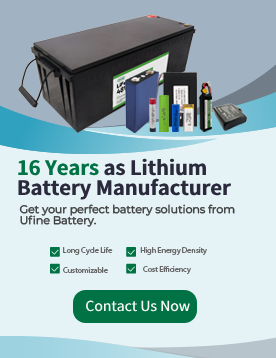
- Part 1. What is an LFP battery? Lithium iron phosphate explained
- Part 2. NMC Battery technology: Nickel manganese cobalt guide
- Part 3. LFP vs NMC: 7 Critical differences (2025 Data)
- Part 4. LFP vs NMC: 2025 Industry application analysis
- Part 5. LFP or NMC? 5-Step selection guide
- Part 6. LFP vs NMC battery: Expert FAQs solved
LFP vs. NMC battery technologies are two of the most popular choices in energy storage, each gaining significant attention for their unique benefits. These advanced systems have transformed industries ranging from electric vehicles to renewable energy storage. This article delves into the differences between LFP batteries and NMC batteries, highlighting their distinct characteristics, advantages, and limitations.
Part 1. What is an LFP battery? Lithium iron phosphate explained
LFP batteries, also known as lithium iron phosphate batteries, are rechargeable lithium-ion batteries that utilize lithium iron phosphate as the cathode material. This chemistry offers several distinct advantages over other lithium-ion battery types, making them ideal for applications such as renewable energy storage systems, electric buses, industrial equipment, and off-grid power solutions where safety, durability, and a long lifespan are essential.
What are the advantages and downsides of LFP?
Advantages:
- Longer lifespan: LFP batteries typically last longer than other lithium-ion batteries, with some models capable of enduring thousands of charge cycles, making them cost-effective over time.
- Enhanced safety: They have a higher thermal stability, reducing the risk of overheating and fire hazards.
- Fast charging capabilities: LFP batteries charge quickly, benefiting various applications, including electric vehicles.
- Wide operating temperature range: LFP batteries perform well in hot and cold environments, making them versatile for different climates.
- Environmental friendliness: LFP batteries are more eco-friendly because they contain no cobalt, a material often associated with environmental and ethical concerns in battery production.
Downsides:
- Lower energy density: Compared to other lithium-ion batteries, LFP batteries have a lower energy density, meaning they store less energy per unit volume or weight.
- Reduced specific power: While they can handle fast charging, LFP batteries may have limitations in delivering high power outputs, impacting performance in particular applications.
- Limited availability: LFP batteries may not be as widely available as other lithium-ion batteries, affecting accessibility and pricing in some markets.
- Larger size and weight: Due to their lower energy density, LFP batteries may require larger dimensions and heavier weights to achieve comparable energy storage capacities, which could be a drawback in space-constrained applications.
- Voltage limitations: LFP batteries have a lower nominal voltage than other lithium-ion chemistries, which may require device design or usage adjustments.
Part 2. NMC Battery technology: Nickel manganese cobalt guide
NMC batteries, short for Nickel Manganese Cobalt batteries, are another type of lithium-ion battery widely used in various industries. Also known as NCM batteries, they utilize a combination of nickel, manganese, and cobalt for their cathode material, offering a different set of advantages and considerations. These batteries are commonly found in electric vehicles, portable electronics like smartphones and laptops, medical devices, and power tools due to their high energy density, compact design, and versatility.
What are the advantages and disadvantages of NMC batteries?
Advantages:
- High energy density: NMC batteries offer a high energy density, meaning they can store much energy in a relatively small space or weight.
- Improved lifespan: NMC batteries have a longer lifespan than other lithium-ion batteries, making them suitable for long-term use in various applications.
- Versatility: Manufacturers can tailor NMC batteries to meet specific energy and power requirements, making them suitable for various applications, from electric vehicles to consumer electronics.
- Fast charging capabilities: NMC batteries charge quickly, allowing for shorter charging times and improved user convenience.
- Enhanced stability: NMC batteries exhibit good thermal stability, reducing the risk of overheating and improving overall safety.
Disadvantages:
- Cost: NMC batteries can be more expensive to manufacture than other lithium-ion chemistries, potentially leading to higher product costs for consumers.
- Limited lifespan at high temperatures: While NMC batteries generally have a good lifespan, exposure to high temperatures can accelerate degradation, reducing overall battery longevity.
- Safety concerns: Although NMC batteries are generally considered safe, there have been thermal runaway and safety issues, primarily when damaged or improperly handled.
- Environmental impact: The production of NMC batteries involves extracting and processing raw materials, which can have ecological implications if not managed responsibly.
- Voltage fade: NMC batteries may experience voltage fade over time, leading to a gradual decrease in capacity and performance, especially after repeated charging cycles.
LFP vs NMC Battery: 2025 Technical Comparison
| Feature | LFP | NMC | Key Insight |
|---|---|---|---|
| Energy Density | 90-120 Wh/kg | 150-220 Wh/kg | NMC better for space-constrained devices |
| Cycle Life | 2,000-5,000 cycles | 500-1,000 cycles | LFP lasts 2-3x longer |
| Safety | Excellent thermal stability | Requires advanced BMS | LFP 80% lower fire risk |
| Cost per kWh | $80-$100 | $120-$150 | LFP 30% cheaper |
| Temperature Range | -20°C to 60°C | 0°C to 45°C | LFP better for extreme climates |
| Real-World Use Cases | Tesla Powerwall, Solar storage | BMW i3, Smartphones, Power tools | Industry preferences |
Data source: 2025 Global Battery Technology Report
Part 3. LFP vs NMC: 7 Critical differences (2025 Data)
Quick Answer: LFP batteries excel in safety and lifespan (2,000-5,000 cycles), while NMC leads in energy density (up to 220 Wh/kg). Choose LFP for solar/home storage, NMC for EVs/portable devices.
Here are some typical comparisons to help you understand the differences between these two battery technologies:
- Safety
- LFP batteries have higher thermal stability and resist thermal runaway.
- This makes them a more secure option where safety is a top priority.
- Cycle Life
- LFP batteries last longer in terms of charge/discharge cycles than NMC batteries.
- Ideal for applications needing extended lifespan and reliability.
- Energy Density
- NMC batteries store more energy per unit volume or weight.
- Best suited for space-constrained or high-capacity applications.
- Power Density
- LFP batteries can deliver high bursts of power rapidly.
- Great for devices that require quick and strong energy discharge.
- Temperature Tolerance
- LFP batteries perform well across a broader temperature range.
- Suitable for extreme or outdoor environments.
- Power Capability
- NMC batteries support high power output and fast charging.
- Ideal for power-hungry applications like EVs and tools.
- Application Suitability
- LFP: Best for stationary systems, solar storage, and safety-focused uses.
- NMC: Preferred for EVs, consumer electronics, and performance-first applications.
Part 4. LFP vs NMC: 2025 Industry application analysis
Understanding where each battery type dominates:
Electric Vehicles
- LFP Dominates: Entry-level EVs (Tesla Model 3 SR, BYD Dolphin)
- NMC Preferred: Long-range models (BMW i4, Ford Mustang Mach-E)
Consumer Electronics
- NMC Share: 90% of smartphones/laptops
- LFP Growth: Power banks over 20,000mAh
Energy Storage Systems
- LFP Leader: 75% of new solar installations
- NMC Use: Grid stabilization requiring high power
Industrial Equipment
- LFP Advantage: Forklifts, marine applications
- NMC Application: Power tools needing high discharge
Part 5. LFP or NMC? 5-Step selection guide
Follow This Decision Tree:
- Is safety your top priority?
- ✅ Yes → Choose LFP (Thermal runaway risk 80% lower)
- ❌ No → Proceed to Q2
- Is space/weight critical?
- ✅ Yes → Choose NMC (50% higher energy density)
- ❌ No → Proceed to Q3
- Budget under $100/kWh?
- ✅ Yes → Choose LFP (30% cheaper than NMC)
- ❌ No → Proceed to Q4
- Need >200Wh/kg energy density?
- ✅ Yes → Choose NMC (Up to 220Wh/kg)
- ❌ No → Proceed to Q5
- Operating in extreme temperatures?
- ✅ Yes → Choose LFP (-20°C to 60°C range)
- ❌ No → NMC acceptable with thermal management
Industry-Specific Recommendations
| Application | Recommended Type | Key Reason | Real-World Case |
|---|---|---|---|
| Home Energy Storage | LFP | Safety + 15-year lifespan | Tesla Powerwall 3 |
| Electric Vehicles | NMC (Premium) LFP (Entry-level) |
Range vs Cost | BMW i4 (NMC) vs BYD Dolphin (LFP) |
| Industrial Equipment | LFP | Durability in harsh conditions | CATL Forklift Batteries |
When to Consult an Expert?
- 🔹 Hybrid systems needing both battery types
- 🔹 Custom voltage/current requirements
- 🔹 Special temperature conditions (-30°C or below)
Pro Tip: For applications requiring >10,000 cycles, consider LTO batteries despite higher cost.
Part 6. LFP vs NMC battery: Expert FAQs solved
Is LFP battery cheaper than NMC?
Yes, significantly. In 2025, LFP batteries cost $80-100/kWh compared to NMC’s $120-150/kWh, making LFP about 30% cheaper. This price difference comes from LFP’s cobalt-free chemistry and simpler manufacturing process.
Are LFP batteries safer than NMC?
Absolutely. LFP’s iron-phosphate cathode has higher thermal stability, with a decomposition temperature of 270°C vs. NMC’s 210°C. This makes thermal runaway 80% less likely in LFP batteries, a key reason Tesla uses them in Powerwall home storage.
Why choose NMC over LFP battery?
Choose NMC when space/weight are critical:
- 50% higher energy density (220 vs 120 Wh/kg)
- Better performance in cold weather
- Higher power output for acceleration
Most EVs (except entry-level) use NMC for longer range.
Do LFP batteries last longer than NMC?
Yes, significantly longer. LFP typically achieves 3,000-5,000 full cycles vs. NMC’s 1,000-1,500 cycles. A 10kWh LFP home battery can last 12+ years versus 6-8 years for NMC at daily cycling.
Which is better for solar storage: LFP or NMC?
LFP is preferred for solar storage due to:
- Longer lifespan (matches 25-year solar panels)
- Better safety for home installations
- Higher temperature tolerance
Industry data shows 75% of new solar installations use LFP.
Related Tags:
More Articles
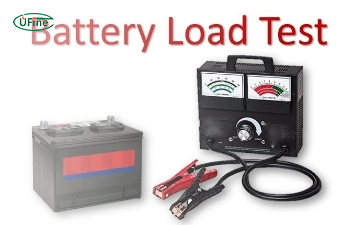
Battery Load Test: A Comprehensive Guide
Step-by-step battery load test guide for car, solar & industrial use. Learn how to load test a battery, interpret voltage charts, and avoid common mistakes.
The Comprehensive Guide to Battery Balancing and Battery Balancer
Discover how battery balancers improve lithium battery performance, lifespan, and safety. Learn types, functions, and tips to choose the right balancer.
What Is the Best Voltage for a Chainsaw Battery?
Compare 12V-80V chainsaw batteries for light pruning, medium firewood, and professional cutting. See best battery chainsaw with runtime charts and safety tips.
Lithium VS. Alkaline Batteries: A Comprehensive Comparison
Lithium batteries last 3–7× longer than alkaline and perform better in cold weather. Compare lifespan, cost, safety, and best uses to choose the right battery.
Comparing Lithium-Sulfur and Lithium-Ion Batteries: Which is Right for You?
Compare lithium-sulfur (Li-S) and lithium-ion batteries on energy, lifespan, cost, safety, and applications. Best choice for drones, EVs, and electronics.
